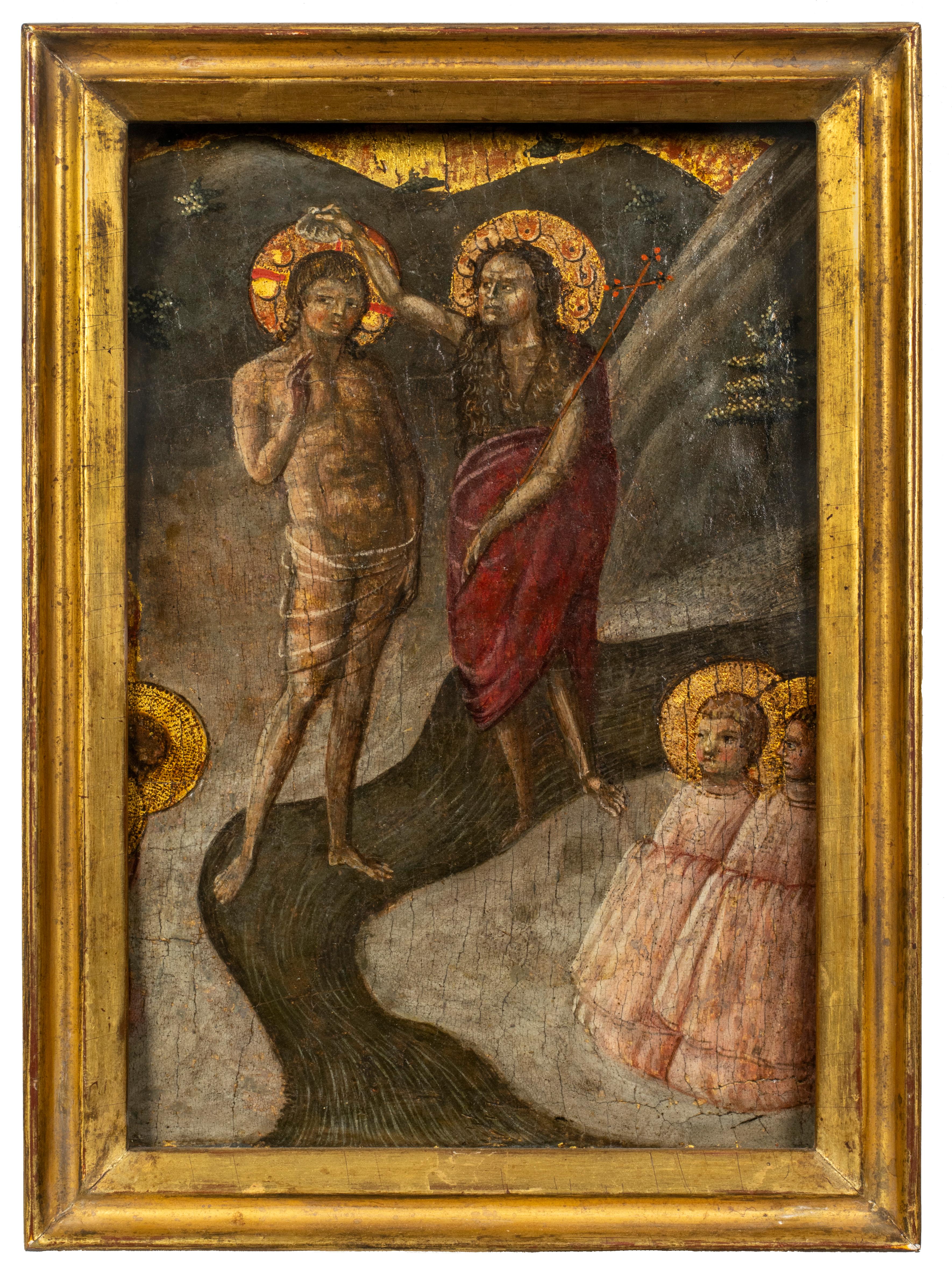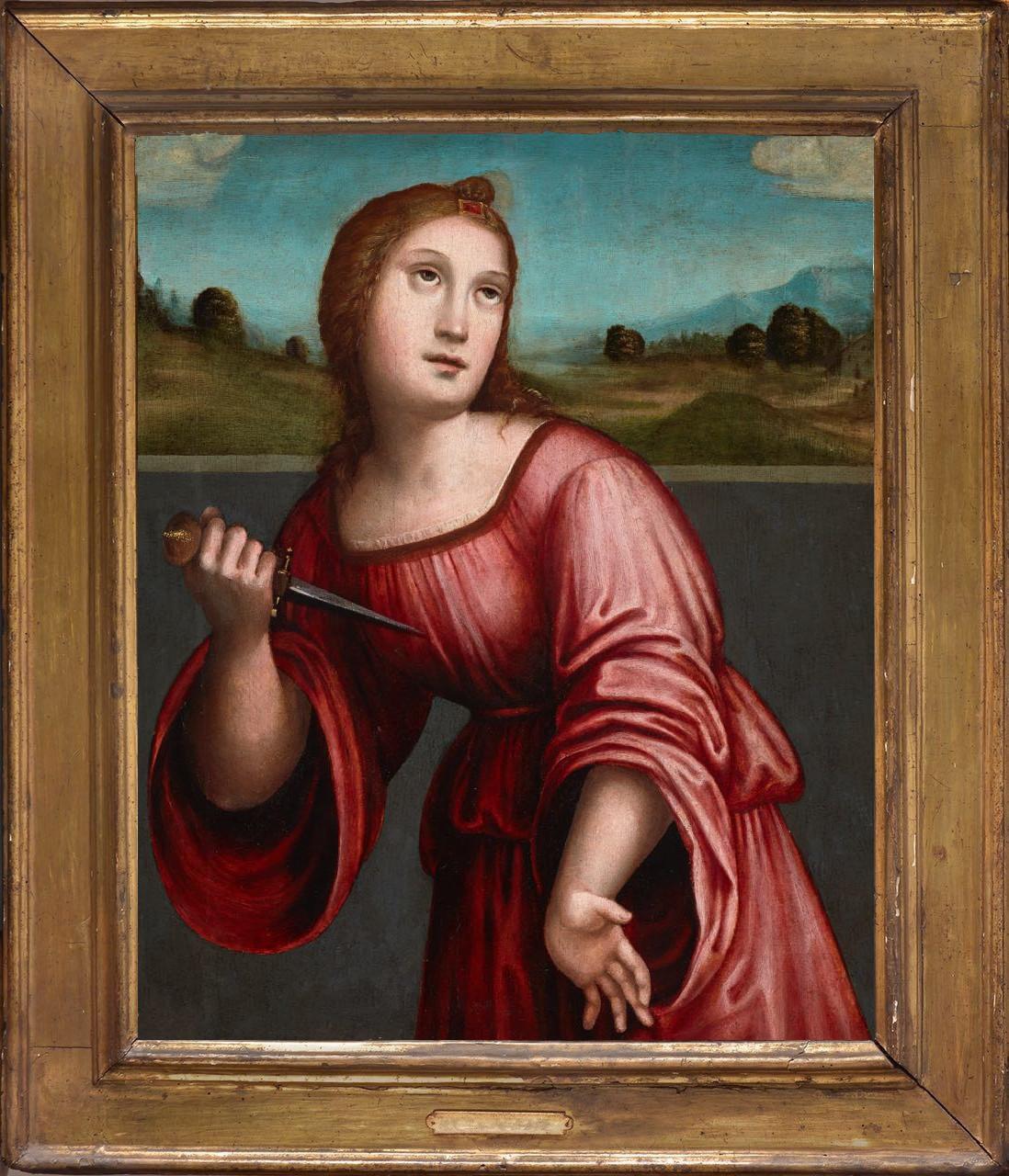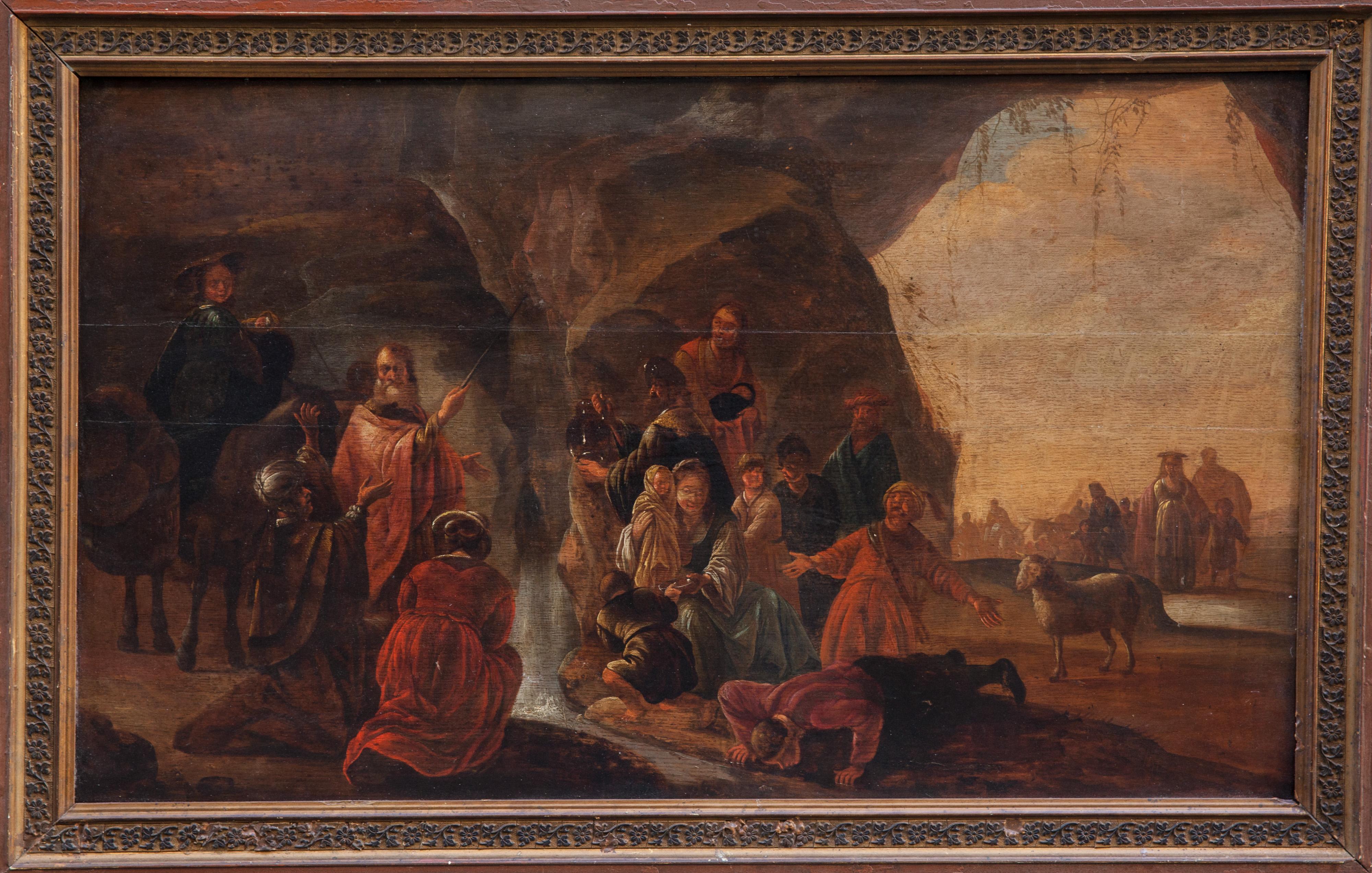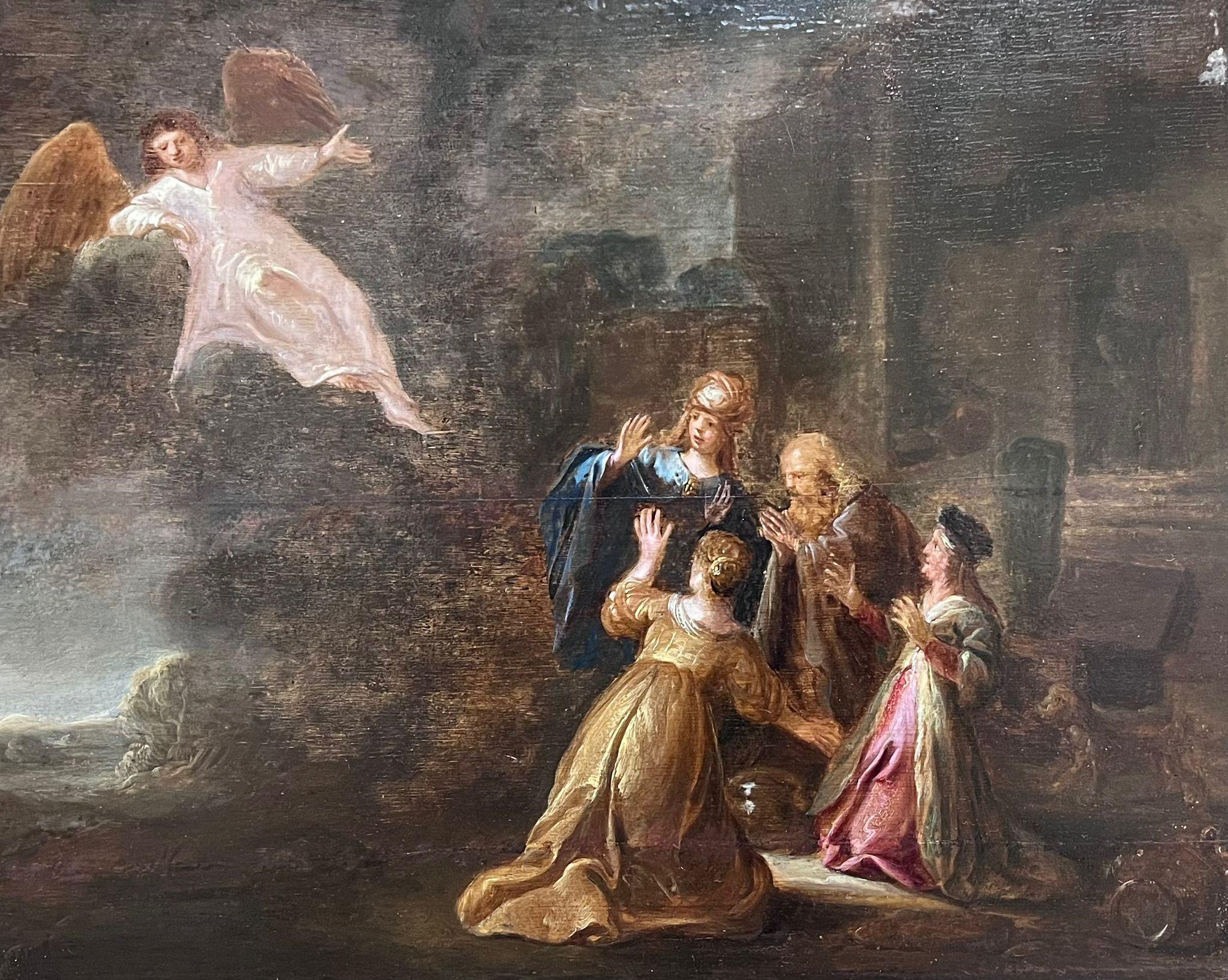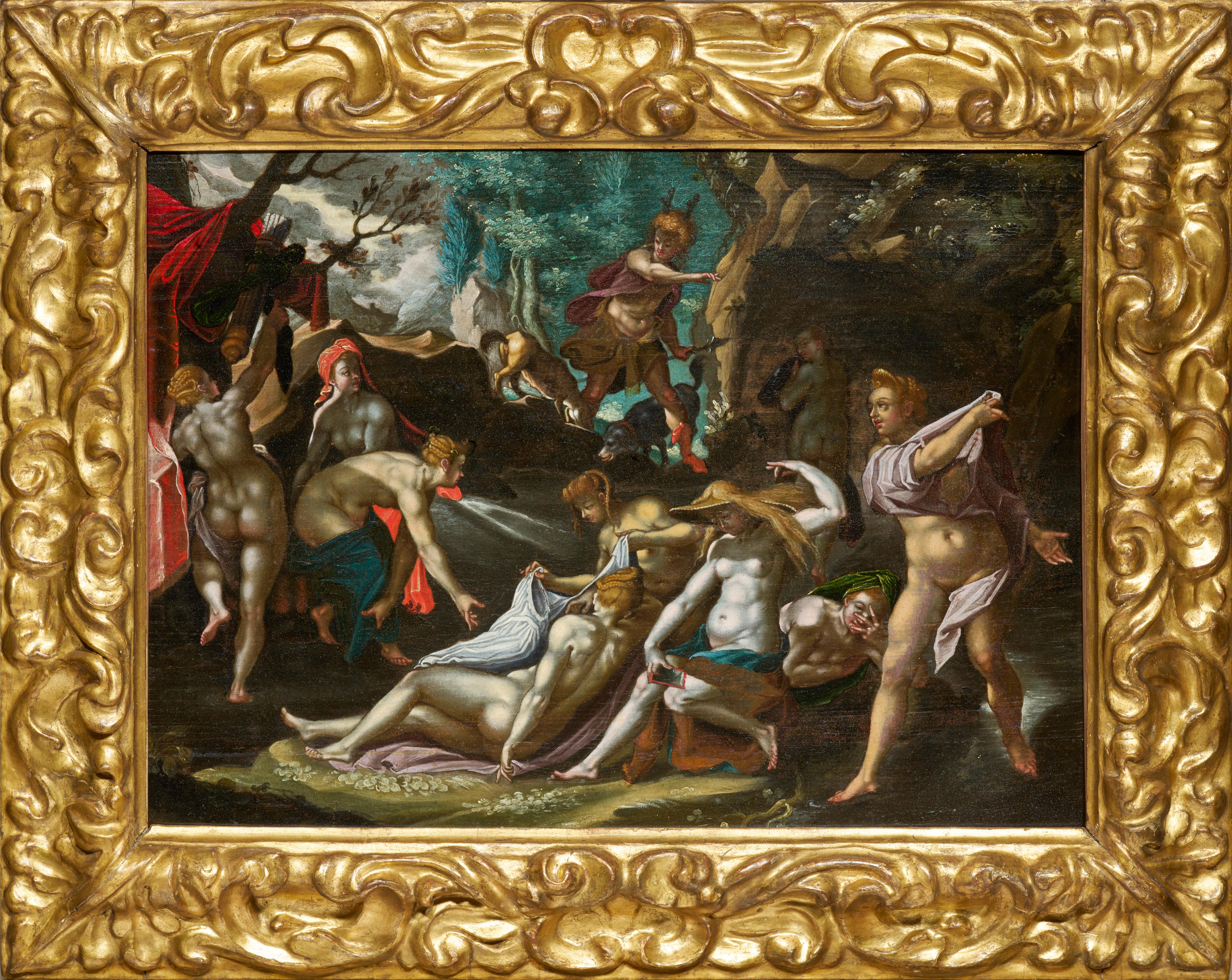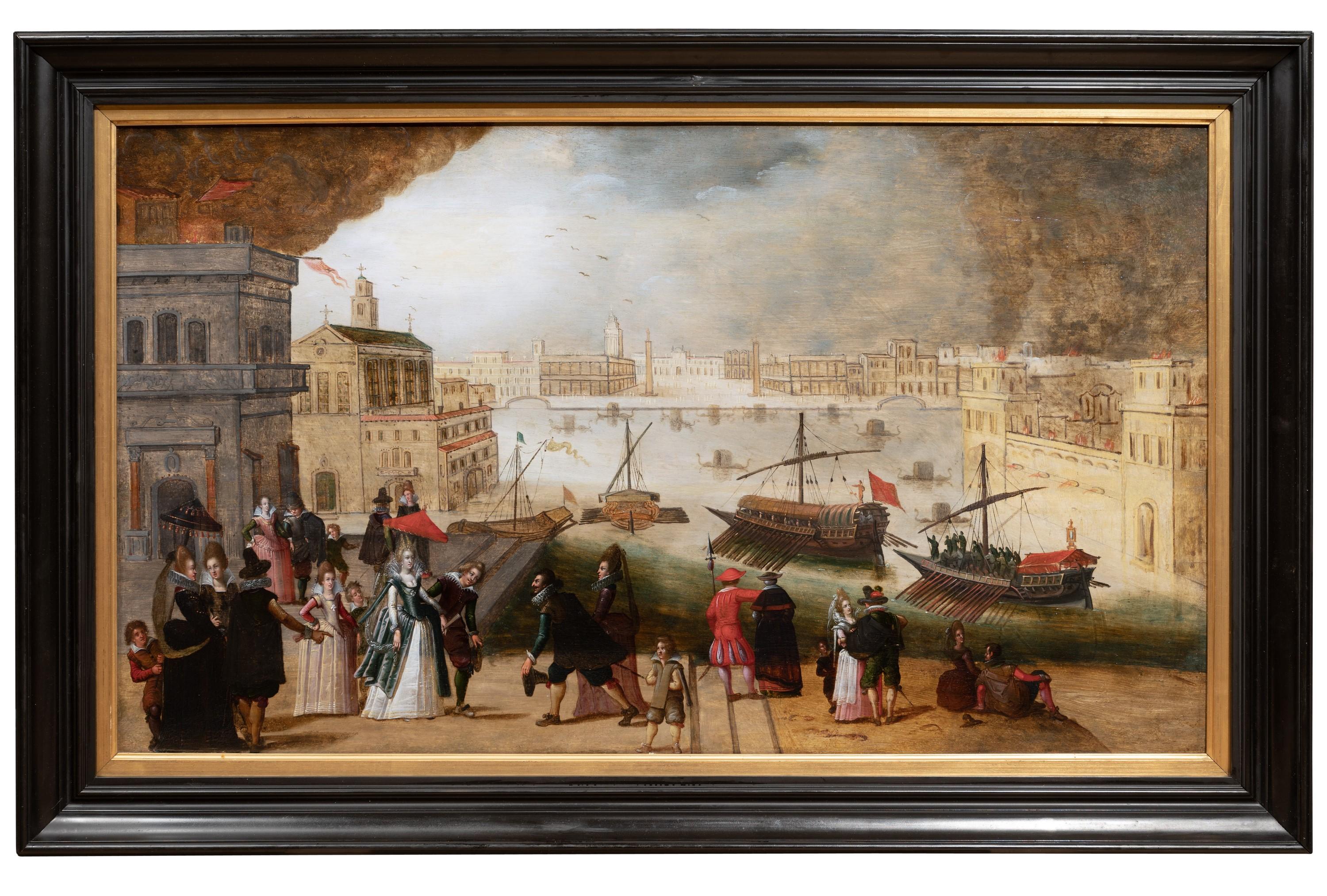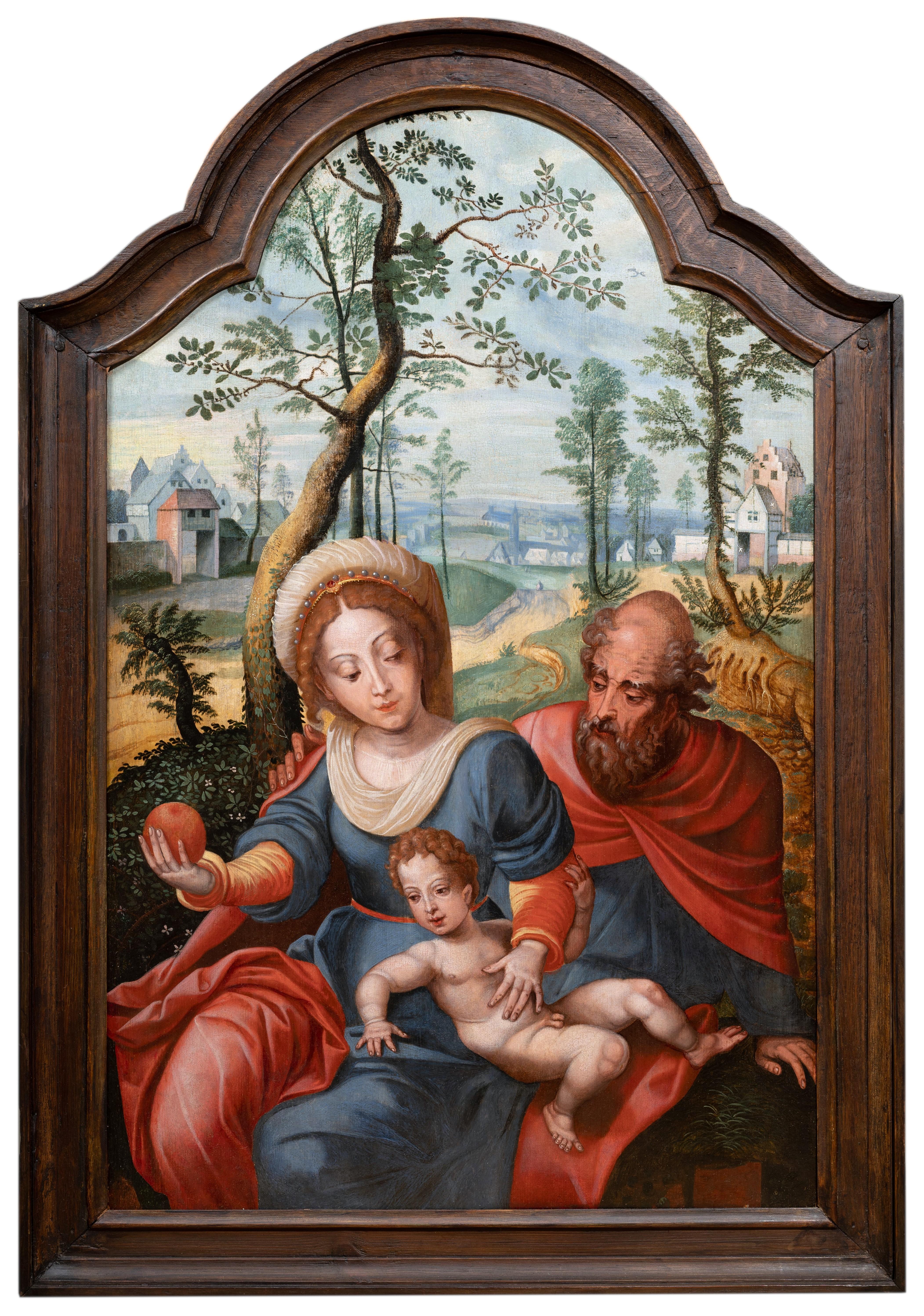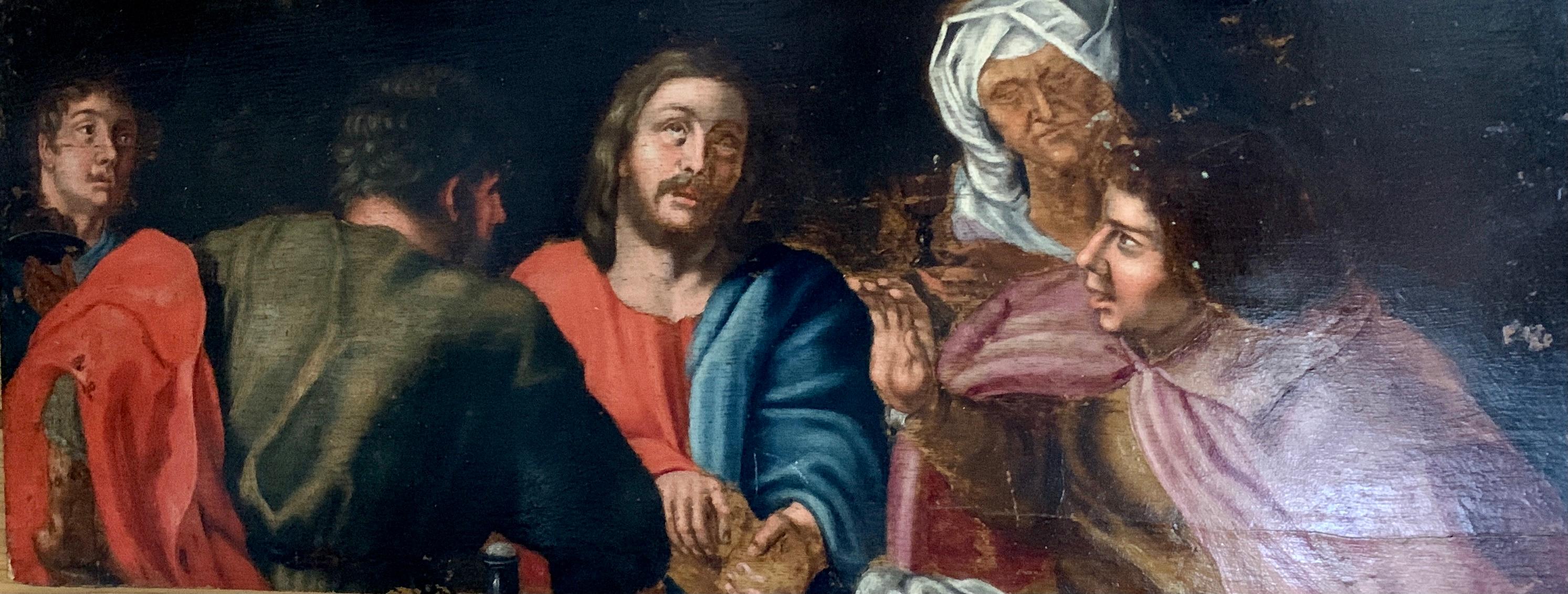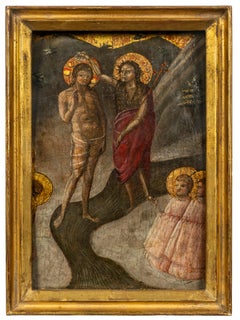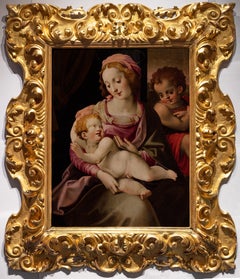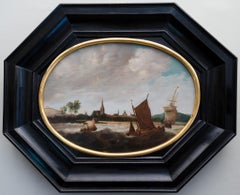
Rebecca at the Well
View Similar Items
Want more images or videos?
Request additional images or videos from the seller
1 of 4
Master of the Apollo and Daphne LegendRebecca at the Wellca. 1500
ca. 1500
About the Item
- Creator:Master of the Apollo and Daphne Legend
- Creation Year:ca. 1500
- Dimensions:Height: 24.875 in (63.19 cm)Width: 45.25 in (114.94 cm)
- Medium:
- Movement & Style:
- Period:
- Condition:
- Gallery Location:New York, NY
- Reference Number:1stDibs: LU1027005632

About the Seller
5.0
Recognized Seller
These prestigious sellers are industry leaders and represent the highest echelon for item quality and design.
Established in 1997
1stDibs seller since 2012
17 sales on 1stDibs
Typical response time: 11 hours
More From This SellerView All
- Baptism of ChristLocated in New York, NYProvenance: Achillito Chiesa, Milan Luigi Albrighi, Florence, by 1 July 1955 with Marcello and Carlo Sestieri, Rome, 1969 Private Collection, Connecticut Exhibited: Mount Holyoke College Art Museum, South Hadley, Massachusetts (on loan, 2012) Literature: Carlo Volpe, “Alcune restituzioni al Maestro dei Santi Quirico e Giulitta,” in Quaderni di Emblema 2: Miscellanea di Bonsanti, Fahy, Francisci, Gardner, Mortari, Sestieri, Volpe, Zeri, Bergamo, 1973, pp. 19-20, fig. 18, as by the Master of Saints Quiricus and Julitta (now identified as Borghese di Piero). This fine predella panel depicting the Baptism...Category
15th Century and Earlier Old Masters Figurative Paintings
MaterialsWood Panel, Tempera
- Madonna and Child with the Infant Saint John the BaptistLocated in New York, NYInscribed, reverse: Fr Brina Provenance: Private Collection, New Jersey. Francesco Brina was one of the “Studiolo” painters, responsible for the panel of Neptune and Amphitrite in F...Category
16th Century Old Masters Paintings
MaterialsOil, Wood Panel
- The Resurrection of ChristLocated in New York, NYProvenance: with “Mr. Scheer,” Vienna, by July 1918; where acquired by: Jindřich Waldes, Prague, 1918–1941; thence by descent to: Private Collection, New York Literature: Rudolf Kuchynka, “České obrazy tabulové ve Waldesově obrazárně,” Památky archeologické, vol. 31 (1919), pp. 62-64, fig. 5. Jaroslav Pešina, “K datování deskových obrazů ve Waldesově obrazárně,” Ročenka Kruhu pro Pěstování Dějin Umění: za rok (1934), pp. 131-137. Jaroslav Pešina, Pozdně gotické deskové malířství v Čechách, Prague, 1940, pp. 150-151, 220. Patrik Šimon, Jindřich Waldes: sběratel umění, Prague, 2001, pp. 166, 168, footnote 190. Ivo Hlobil, “Tři gotické obrazy ze sbírky Jindřicha Waldese,” Umění, vol. 52, no. 4 (2004), p. 369. Executed sometime in the 1380s or 1390s by a close associate of the Master of the Třeboň Altarpiece, this impressive panel is a rare work created at the royal court in Prague and a significant re-discovery for the corpus of early Bohemian painting. It has emerged from an American collection, descendants of the celebrated Czech industrialist and collector Jindřich Waldes, who died in Havana fleeing Nazi-occupied Europe. The distinctive visual tradition of the Bohemian school first began to take shape in the middle of the fourteenth century after Charles IV—King of Bohemia and later Holy Roman Emperor—established Prague as a major artistic center. The influx of foreign artists and the importation of significant works of art from across Europe had a profound influence on the development of a local pictorial style. Early Italian paintings, especially those by Sienese painters and Tommaso da Modena (who worked at Charles IV’s court), had a considerable impact on the first generation of Bohemian painters. Although this influence is still felt in the brilliant gold ground and the delicate tooling of the present work, the author of this painting appears to be responding more to the paintings of his predecessors in Prague than to foreign influences. This Resurrection of Christ employs a compositional format that was popular throughout the late medieval period but was particularly pervasive in Bohemian painting. Christ is shown sitting atop a pink marble sarcophagus, stepping down onto the ground with one bare foot. He blesses the viewer with his right hand, while in his left he holds a triumphal cross with a fluttering banner, symbolizing his victory over death. Several Roman soldiers doze at the base of the tomb, except for one grotesque figure, who, beginning to wake, shields his eyes from the light and looks on with a face of bewilderment as Christ emerges from his tomb. Christ is wrapped in a striking red robe with a blue interior lining, the colors of which vary subtly in the changing light. He stands out prominently against the gold backdrop, which is interrupted only by the abstractly rendered landscape and trees on either side of him. The soldiers’ armor is rendered in exacting detail, the cool gray of the metal contrasting with the earth tones of the outer garments. The sleeping soldier set within a jumble of armor with neither face nor hands exposed, is covered with what appears to be a shield emblazoned with two flies on a white field, somewhat resembling a cartouche (Fig. 1). This may be a heraldic device of the altarpiece’s patron or it may signify evil, referencing either the Roman soldiers or death, over both of which Christ triumphs. This painting formed part of the collection assembled by the Czech industrialist and founder of the Waldes Koh-i-noor Company, Jindřich Waldes, in the early twentieth century. As a collector he is best remembered for establishing the Waldes Museum in Prague to house his collection of buttons (totaling nearly 70,000 items), as well as for being the primary patron of the modernist painter František Kupka. Waldes was also an avid collector of older art, and he approached his collecting activity with the goal of creating an encyclopedic collection of Czech art from the medieval period through to the then-present day. At the conclusion of two decades of collecting, his inventory counted 2331 paintings and drawings, 4764 prints, and 162 sculptures. This collection, which constituted the Waldesova Obrazárna (Waldes Picture Gallery), was first displayed in Waldes’ home in Prague at 44 Americká Street and later at his newly built Villa Marie at 12 Koperníkova Street. This Resurrection of Christ retains its frame from the Waldes Picture Gallery, including its original plaque “173 / Česky malíř z konce 14 stol.” (“Czech painter from the end of the 14th century”) and Waldes’ collection label on the reverse. The Resurrection of Christ was one of the most significant late medieval panel...Category
15th Century and Earlier Old Masters Paintings
MaterialsTempera, Panel
- Esther in the Women's House of AhasuerusBy Artus WolfortLocated in New York, NYBorn in Antwerp, Artus Wolffordt received his training in Dordrecht where he became a master in 1603 at the age of twenty-two. He returned to his native city in 1615 and initially worked as an assistant to Otto van Veen...Category
17th Century Old Masters Paintings
MaterialsPanel, Oil
- Portrait of a ManLocated in New York, NYProvenance: with Leo Blumenreich and Julius Böhler, Munich, 1924 Dr. Frederic Goldstein Oppenheimer (1881-1963), San Antonio, Texas; by whom given to: Abraham M. Adler, New York, un...Category
16th Century Old Masters Portrait Paintings
MaterialsOil, Panel
$52,500 - Job Cursed by His WifeBy Giovanni Battista LangettiLocated in New York, NYProvenance: Alfred (1883-1961) and Hermine Stiassni (1889-1962), Brno, Czech Republic, by 1925; thence London, 1938-1940; thence Los Angeles, 1940-1962; thence by descent to: Susanne Stiassni Martin and Leonard Martin, San Francisco, until 2005; thence by descent to: Private Collection, California Exhibited: Künstlerhaus, Brünn (Brno), 1925, as by Ribera. “Art of Collecting,” Flint Institute of Art, Flint, Michigan, 23 November 2018 – 6 January 2019. Literature: Alte Meister...Category
1670s Old Masters Paintings
MaterialsCanvas, Oil
You May Also Like
- Circa 1400, Spanish school of 'The Prophet Daniel', tempera on panel with gildinLocated in Petworth, West SussexSpanish school, circa 1400 The prophet Daniel Tempera on panel with gilding 35.1/4 x 10.5/8 in. (89.5 x 28 cm.) Condition: The painting has been recently stabilised and cleaned up. ...Category
15th Century and Earlier Old Masters Figurative Paintings
MaterialsWood Panel, Tempera
- Russian Icon 16th century The Battle of the Novogorodians with the SuzdaliansBy Russian SchoolLocated in London, GBThe Battle of the Novogorodians with the Suzdalians 16th century Size 50.5 x 47.5 x 3 cm. The icon is located in the Russian Federation. There is an expert opinion from leading R...Category
16th Century Old Masters Paintings
MaterialsWood, Egg Tempera, Wood Panel
- Dutch School, 17th Century, Shipping in a Stiff Breeze, a City BeyondLocated in Stockholm, SEWe are delighted to present a significant piece from the Dutch School, most likely dating back to the late 17th century. This captivating painting showcases the dynamic force of nature with three ships vigorously navigating through stormy waters. The foreground is a scene of nautical struggle, as figures are depicted working intensely with the sails, steering, and bracing against the tumultuous sea. In the serene background, the silhouette of a quaint town emerges, with spires from churches and the outlines of various buildings is visible. This juxtaposition of the calm town against the chaotic foreground serves as a powerful reminder of the unpredictability of life and nature. Dominating the canvas, the sky occupies two-thirds of the painting, filled with brooding clouds that occasionally break to reveal patches of blue. The presence of birds adds a dynamic element to the otherwise ominous atmosphere. While the artist remains unknown, the work is quintessentially Dutch in its execution, with meticulous attention to detail and a profound understanding of maritime life. The painting's oval shape is quite distinctive and is complemented by a suitably antique octagonal black frame, which adds to its historical charm. This piece is a testament to the mastery of Dutch maritime painting...Category
17th Century Old Masters Landscape Paintings
MaterialsOak, Oil, Wood Panel
$4,837 Sale Price20% Off - Lucretia, by Giacomo Raibolini Francia. Detto il Francia. Oil on panel, framedLocated in Brooklyn, NYGiacomo used to paint with his brother Giulio, identifying their works with the monogram «I I». The strong influence of his father, Francesco, is undeniable in all his works, althoug...Category
16th Century Old Masters Figurative Paintings
MaterialsOil, Wood Panel
- Moses Strikes the Water from the Rock. XVII cent. Dutch school.Located in Firenze, ITMoses Strikes Water from the Rock Dutch school, XVII century. Workshop of Jacob de Wet (Haarlem, 1610-1675). Technique: Oil on oak wood panel, composed of 3 horizontal panels. In this evocative work, Moses stands in a cave, gathering the Israelites. There was no water to drink or for their cattle. The people were discontented in the desert. But Moses and Aaron listened to the voice of God. With Aaron’s staff, Moses struck the rock, and water gushed forth abundantly, quenching their thirst. Jacob de Wet’s workshop specializes in subjects from the Old and New Testaments. The recognizable rectangular format, simple compositions, and clear narratives define his style. The interplay of light and shadow, reminiscent of Rembrandt, adds timeless allure. The characters’ costumes, with their large hats and turbans...Category
17th Century Old Masters Figurative Paintings
MaterialsOil, Wood Panel
- Fine 17th Century Dutch Old Master Oil on Panel Angelic Visitation to FiguresBy Rembrandt van RijnLocated in Cirencester, GloucestershireThe Angelic Visitation Dutch School, mid 17th century circle of Rembrandt (Dutch 1606-1669) oil on wooden panel, framed in faux tortoiseshell style frame. framed: 25 x 28.75 painting...Category
17th Century Old Masters Figurative Paintings
MaterialsOil, Wood Panel
Recently Viewed
View AllMore Ways To Browse
Gate Orange
French Painting Boulevard
Oil On Canvas Morocco
La Forge
Morocco Oil On Canvas Morocco
Ves P
Charcoal Mural
Mythological Italian Paintings
Calendar Illustration
Vintage Casino Art
Cubist Figure Oil
Paris Saint Michel
Bathers Figurative
Blue Dress Girl
Greek Mythology Painting
Asian Art Nude
Us War 2 Posters
Line Drawings Men

